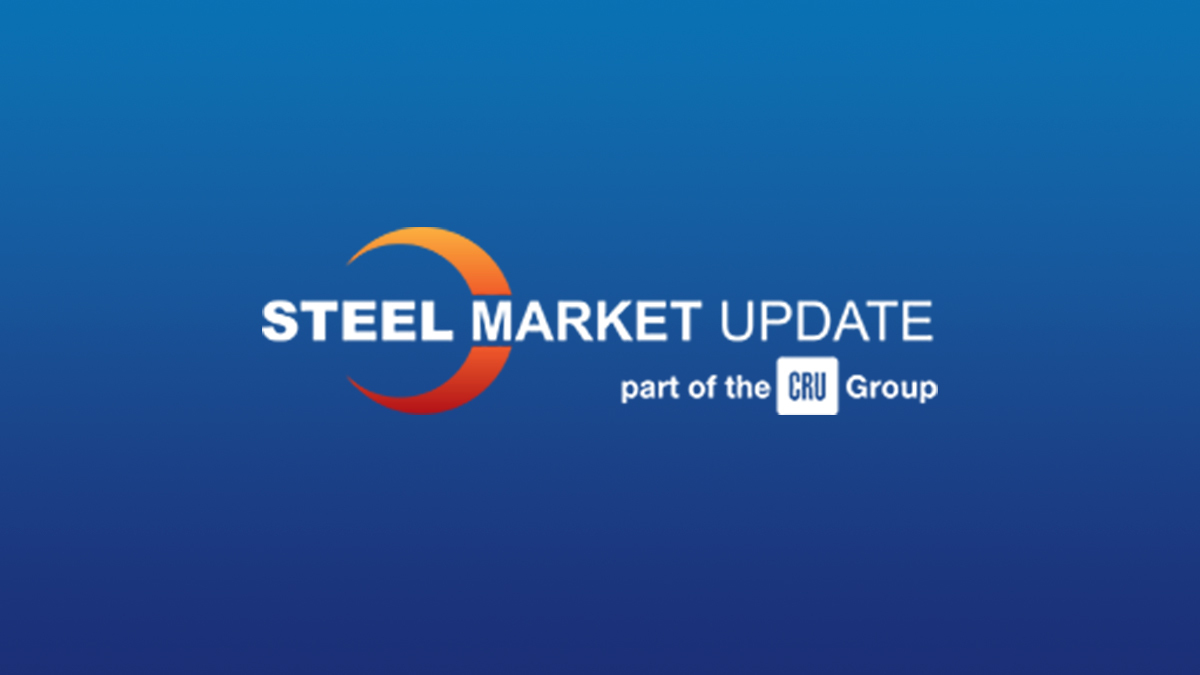SMU Community Chat

SMU Community Chat: St. Germain on a rosier 2025 outlook - if conditions are right
Written by Stephanie Ritenbaugh
December 12, 2024
After a gloomy 2024, things could be looking up for the industrial sector in 2025 and 2026.
That was the takeaway from Taylor St. Germain, an economist and speaker at ITR Economics, who spoke this week at the SMU Community Chat hosted by SMU Managing Editor Michael Cowden. St. Germain is also host of the firm’s TrendsTalk podcast.
St. Germain illustrated that the industrial production index for the United States saw a big run-up in demand following the Covid-19 pandemic but began to decline in 2022. In 2024, the index, which is about 75% manufacturing and 25% mining, utilities, and oil and gas, dipped below zero to -0.2%. The global index also slipped during this period, but stayed above zero.
“There’s no sugar coating it – 2024 has been a challenging year,” St. Germain said.
However, ITR expects growth in 2025 and 2026 for the industrial sector, both in the US and worldwide.
“What I’m suggesting to you all is, here in the US, we’re at the low point. And we see demand improving as we look at ’25 and ’26,” he said.
“The even-better news is that we see the industrial economy, in terms of size, soaring to new, record highs,” St. Germain said. “And the reason we’re getting some of these new record highs that we haven’t seen over the course of the last decade is because of a lot of the onshoring and near-shoring that’s been coming back to the US.
“Some might say that that onshoring and near-shoring is a result of tariffs. Some might say it’s lessons learned from the pandemic. Whatever you chalk it up to, it’s good news for the US economy,” he added.
Tariffs and supply chains
St. Germain said the calls for more rigid export controls and tariffs have prompted many of ITR’s clients to take a “China+1” approach, meaning they’re lining up sources outside of China.
“Make sure you’re evaluating that supply chain and have a diversified supply chain. There’s growth in ‘25 and ‘26. But we can run into some real challenges if we’re very reliant on China, especially given the current administration and the upcoming administration’s perspective on some of this protectionism.”
There’s still a lot of uncertainty about what tariffs will actually be put into place. And there are questions about how much of the discussion around that issue now is a negotiation tactic by the Trump administration.
But if higher tariffs are enacted, price increases will most likely follow.
ITR forecasts the Producer Price Index rising 2.6% in 2025 and 3.4% in 2026. “If we do see a significant number of these tariffs actually implemented, it’s likely that these values will be higher,” St. Germain said. “So it’s important to have a contingency plan for that.”
He noted that in 2017 and 2018, higher steel and aluminum tariffs, there was about a percentage point revision upward to the PPI.
“Now, these tariffs that are being proposed are more significant than that, to say the least,” he added. “A 2.5- to 3.5-percent range can very quickly become 5% to 7%.”
Interest rates and capex
ITR expects that many central banks will continue to lower interest rates into 2025, which will stimulate cap-ex activity.
But if inflation doesn’t fall to the Federal Reserve’s target of 2%, what will the Fed do about rates? St. Germain said his concerns surround tight labor markets and tariffs. “It’s not necessarily that the Fed would increase rates, but that they’d freeze their decreases.”
St. Germain was asked what would happen if inflation squeezes manufacturers and consumers don’t accept price increases.
“That’s the biggest challenge for ‘25, especially with tariffs,” he said. “The demand will be there, and your revenue will grow. But can you maintain that margin?”
St’ Germain noted “that goes back to my comment of why the Fed could freeze rate changes.”
He pointed out that “if we do see significant tariffs, as businesses, we all know that those costs are often passed through to the consumer.”
“So it’s either the consumer starts to eat those costs, which could stop the interest rates from coming down, or businesses struggle to pass through,” St. Germain added.
Editor’s note
Did you miss the Community Chat? No problem! SMU subscribers can catch a replay of the discussion (and all past Community Chats) on our website. You can register for upcoming Community Chat webinars there as well.

Stephanie Ritenbaugh
Read more from Stephanie RitenbaughLatest in SMU Community Chat

SMU Community Chat: CRU analysts discuss shifting metallics mart tangled by tariffs
With steel prices drifting and trade flows shifting, CRU analysts provided a grounded look at what's really happening — and what's not — across the metallics supply chain during Wednesday's SMU Community Chat.

Register for the next SMU Community Chat with ISM CEO Tom Derry!
Institute for Supply Management CEO Tom Derry will join SMU for our next Community Chat on Wednesday, July 23, at 11 a.m. ET (10 a.m. CT)

SMU Community Chat replay now available
The latest SMU Community Chat webinar reply featuring Thais Terzian and Frank Nikolic of CRU Group, is now available on our website to all members. After logging in at steelmarketupdate.com, visit the community tab and look under the “previous webinars” section of the dropdown menu. All past Community Chat webinars are also available under that selection. If you need […]

SMU Community Chat: CRU analysts Thais Terzian and Frank Nikolic on Wednesday
CRU analysts Thais Terzian and Frank Nikolic will be the featured guests on the next SMU Community Chat on Wednesday, July 9, at 11 am ET.

SMU Community Chat: CRU analysts Thais Terzian and Frank Nikolic on Wednesday
CRU analysts Thais Terzian and Frank Nikolic will be the featured guests on the next SMU Community Chat on Wednesday, July 9, at 11 am ET. The live webinar is free for anyone to attend. A recording will be available to SMU subscribers.
